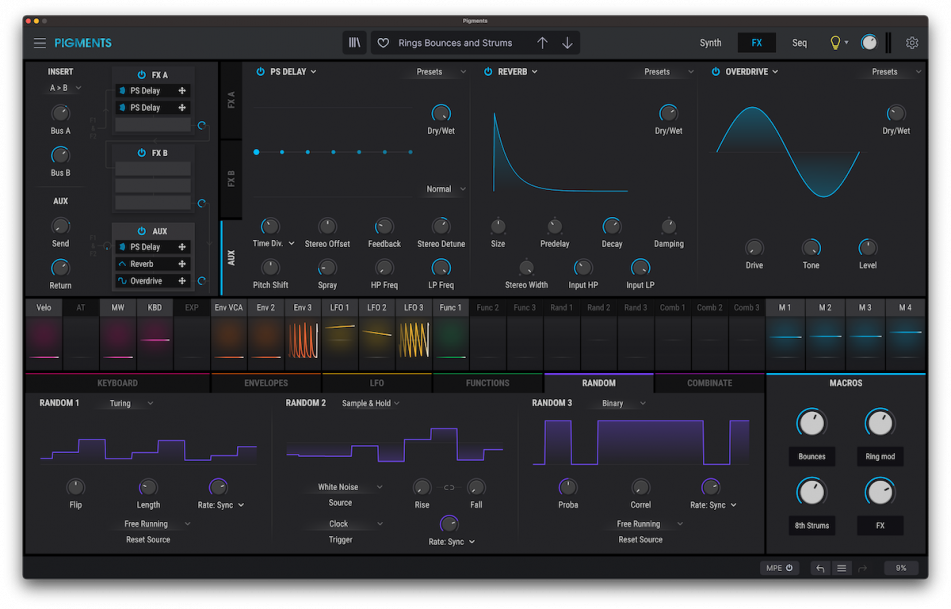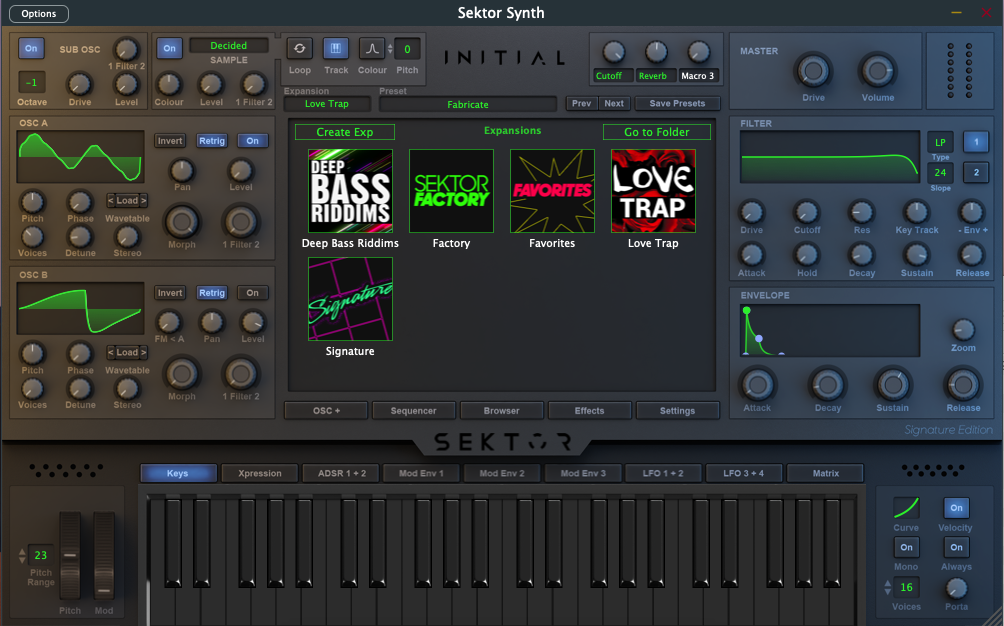

The two engines feed into a pair of independently pan-able filters, routed in any blend of series and parallel via a continuous knob. Import of external WAVs into the engine is permitted, but alas, there’s no wavetable editor. The Wavetable engine can also stack up to eight unison voices, detuned freely or snapped to chords - we’re puzzled as to why the Analog engine can’t do the same. The controls for the modulators themselves sit in the tabbed bottom window, and every signal is beautifully visualised there, in the Overview strip and in the collar around each knob. Each pairing can have a Sidechain source assigned, too, for depth modulation. Alternatively, clicking the + button next to a knob switches the Overview strip to a bank of depth sliders: set the sliders to modulate the knob. The three Functions generators are 64-point envelopes/step sequencers, while the Turing, Sample & Hold and Binary Random sources each output their own brand of chaos, and the two Combinate modules merge pairs of sources using various mathematical processes.Īssignments are made by selecting a modulator in the Overview strip, then dragging the collars around each target parameter knob to set the depth. As well as the expected LFOs and envelopes (three of each, with selectable Reset and Gate triggers), Macro knobs (four) and MIDI sources (Velocity, Modwheel, etc), Pigments includes the more imaginative Functions, Random and Combinate modulators. With the exception of certain FX parameters, every knob in Pigments can be modulated, from the Wavetable engine’s Phase Distortion amount to the Sequencer’s Rate.

Phase Distortion and Wavefolding functions open up some serious destructive waveshaping possibilities, and both - along with Phase and Frequency - can be conveniently modulated by an ancillary (and, optionally, audible) analogue/ noise oscillator. Each one of them consists of up to 256 waveforms, and the Position knob can be set to jump from one wave to the next, or to interpolate through them more smoothly. The Wavetable engine draws upon more than 100 categorised wavetables (Natural, Processed, Synthesizers, etc). The Drift control introduces random pitch fluctuations for a touch of analogue authenticity, should you want it.

Osc 2 can sync to Osc 1 Oscs 2 and 3 can have keytracking disabled and Oscs 1 and 2 can be frequency modulated by any mix of Osc 3 and Noise. The Analog engine comprises three oscillators, each outputting a sine, saw, triangle or square wave (the last two featuring PWM), and a noise generator that sweeps from Red through White to Blue noise. Each of Pigments’ two engines can be switched between Analog and Wavetable modes.


 0 kommentar(er)
0 kommentar(er)
